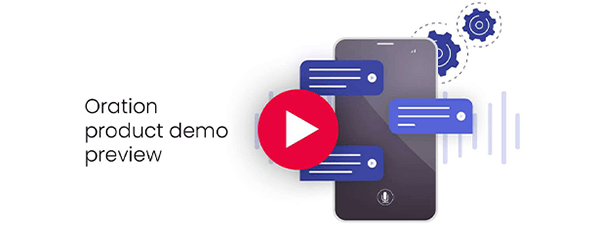Jump to the statistics summary
If you’ve ever considered incorporating automation into your business or are unsure whether it’s worth the investment, then read on. With the automation market expected to grow from $15.2 billion in 2020 to 30.4 billion in 2026[1], it’s too risky to just sit idly and let these efficiency and productivity opportunities pass by. In this blog, we discuss how automation can lead to process improvements in an organisation and how to identify automation opportunities tailored to your business.
Automation and process improvements
Why automate? When we really think about automation and what it can do for a business, the opportunities are endless. 24% of businesses[2] use automation to cut operational expenses, 31% of business leaders[3] use it to reduce labour costs and 67% of companies[4] use automation to improve visibility across departments. Automation is one of the best ways to save time and minimise costs.
Automation reduces the need for human intervention across a variety of processes. This can mean completing tasks faster, quicker and more efficiently. Let’s consider labour efficiencies for one. An artificially intelligent-powered machine could perform the work of a human up to 1,000 times faster[5]. This leads to 1,000 times more production, 1,000 times more efficiency and 1,000 times more resources (be it time or human employees) to focus on higher-value tasks like client relationship management or project strategy.
Automation doesn’t have to be a physical and large piece of machinery on a production line. Automation can be behind the scenes in the form of software or add-on hardware that can be programmed to analyse and keep track of big data.
To understand how automation can increase efficiency and productivity no matter your organisation or the types of tasks handled across it, let’s look at the statistics:
- 73% of organisations quote automation as having saved up to 50% of their employee's time[6] spent on performing manual tasks
- 57% of executives believe the implementation of automation technology has saved costs associated with manual job processing between 10% and 50%[7]
- 51% of automation initiatives[8] aim to boost efficiency for an organisation.
According to a report by WorkMarket:
- 42% of executives believe workflow automation speeds up the completion of tasks that are repetitive in nature
- More than 50% of organisations agree that digital process automation minimises human error in a workflow
- 78% of executives believe automation improves productivity for the entire business
- 85% of leaders anticipate the automation of even some of the workload will give them and their employees more time to focus on higher-value goals to do with strategy.

How to identify automation opportunities in your business?
You may already be well on your way to incorporating automation in your business or at least have a few ideas of where you want efficiency and productivity levels to improve to. In any case, here is a quick set of questions to ask your department leaders to identify where automation opportunities lie within the organisation. These will provide a good indication of where to start:
- Are there any tasks that are repetitive, standardised, high-volume or time-consuming?
- What positions or tasks take up the most manual overhead?
- Where are we seeing the majority of manual errors occur?
- Which tasks have a clearly defined set of processes to complete?
To then filter through the answers to the above, start asking:
- Would automating these tasks be cost-effective?
- Do we automate the entire workflow or to improve efficiencies, do we just need to automate certain tasks?
- If we automate a task, is there additional software or technology that needs to be updated to reflect such changes?
- Would automating a task lead to higher returns long term?
Last but not least, do your research and consult the experts. There is no harm in picking up the phone and consulting the companies that offer automation software improvements or hardware and asking them, ‘what can you do for me?’ Explain your goal and ask if their automation solutions can support it.
Oration: automating the IDV process
One of the biggest challenges faced by contact centres is working out how to make operations run more efficiently while, at the same time, improving the quality of the customer experience by delivering faster resolutions. Powered by the most up-to-date artificial intelligence technology, Oration is a cloud-based call routing plug-in that can reduce the average handling time for your contact centre agents, politely deflect unnecessary calls, and impress your customers by starting with one simple question: “How can I help you today?“.
Oration automates the identification and verification process for a contact centre using application programming interfaces (APIs) to interact with existing client data systems. This means accessing back-end data to allow the system to speak, act and respond to caller demands without the need for an agent.
Designed to be implemented as an add-on to your existing contact centre technology infrastructure, you can start reaping the benefits of automation in just a few hours. Using the latest generation of speech recognition technology, Oration can determine caller intent and fast-track your customers’ calls to the most appropriate outcome.
Creating a frictionless customer journey with automation
Leveraging automation to improve efficiencies and elevate the customer experience is all a part of creating a frictionless customer journey for your business. The world has changed dramatically over the last couple of years, but even before the pandemic, consumers lived in a fast-paced environment full of choices between competing brands and ever-evolving technologies. In today’s world, customer expectations are high, and they expect excellent customer service that is both hassle-free and highly personalised. Critical to providing excellent customer service is the concept of a completely frictionless customer experience; one that is as seamless, efficient, helpful, enjoyable and as stress-free as possible.
Reference
[1] https://www.reportlinker.com/p04944763/Traffic-Management-Market-by-Software-Hardware-Service-System-and-Region-Global-Forecast-to.html
[2] https://www.brookings.edu/blog/up-front/2022/01/19/understanding-the-impact-of-automation-on-workers-jobs-and-wages/
[3] https://images.adpinfo.com/Web/ADPEmployerServices/%7B085dfeb6-e471-4e88-b8fb-dc0b2b9b2b07%7D_2020-In(Sight)-Report.pdf
[4] https://camunda.com/wp-content/uploads/2020/10/Camunda-State-Of-Process-Automation.pdf
[5] https://www.nature.com/articles/s41586-020-2442-2
[6] https://www.salesforce.com/content/dam/web/en_us/www/documents/platform/it-leaders-fueling-time-and-cost-savings-with-process-automation.pdf
[7] https://www.salesforce.com/content/dam/web/en_us/www/documents/platform/it-leaders-fueling-time-and-cost-savings-with-process-automation.pdf
[8] https://camunda.com/wp-content/uploads/2020/10/Camunda-State-Of-Process-Automation.pdf







